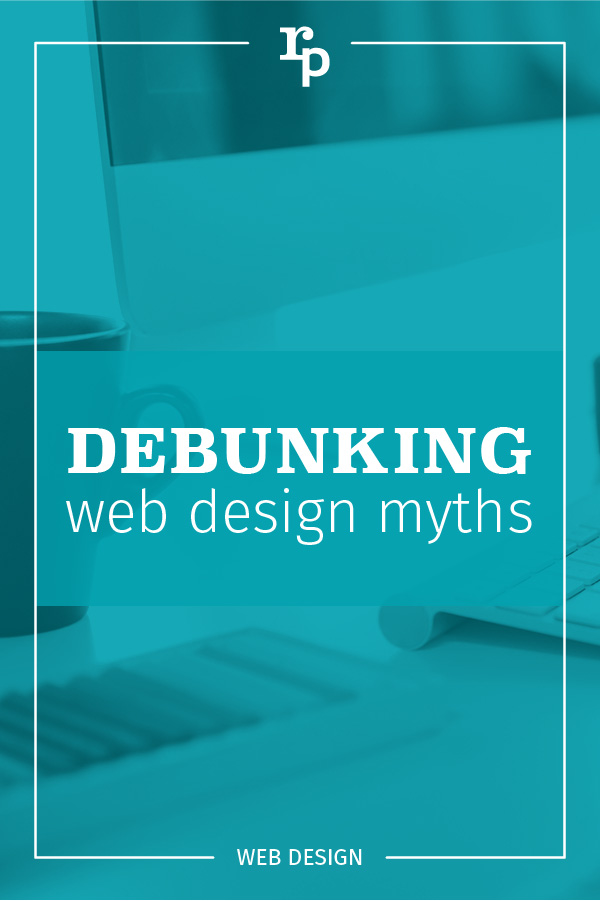Web Design Myths
Why Do Web Design Myths Exist?
As a web designer, I hear a lot of interesting requests based on our clients’ understanding of how their website should look and work. Web trends change regularly, so most people who are not designers understandably have better things to do than keep up with the fire hose of running design commentary. Unfortunately, sometimes the stuff that sticks is no longer applicable or was simply a web design myth, something that wasn’t even true in the first place. For example:
You View Your Website Like Your Users Do
You know your business inside and out. You can recite your mission statement backwards as well as forwards. Clearly you’re a business that does ___________ , so someone who visits your website is trying to make a cost comparison first. Once they have those details they’ll call you straight away.
Not Quite
Want to know how someone is going to click around on your website? Find someone who doesn’t eat, sleep and breathe with your business on his or her mind. Not even an employee or family member. Best-case scenario: someone who could be interested in your business who’s never heard of you.
Turns out, some people will click on the “about us” page first. They want to know who they’re working with or is making the product. They read someone’s profile, which directs them to a blog post. Maybe they scan that for a minute, and click something else. Others will start with a blog post. If you don’t provide a logical next step with a link to a related article or special offer, their next step will be right back to Google.
Not what you thought at all
How people interact with technology is still pretty nebulous, to the extent there’s the whole field of user experience design dedicated to it. Your designer will guide you, but keep in mind what’s most important for your website from your perspective may not be, and frankly probably isn’t, what’s most important to the person visiting your site. Keep that in mind as you organize your information.
People Read Your Content
I know, I’m sorry, busting this web design myth really cuts to the quick. You’ve heard over and over people surfing the interwebs have the attention spans of gnats, to the point it’s hard to believe. Whatever it means for the state of humanity, our patience for anything on a screen is a few seconds long.
The about page I mentioned before, where a potential customer is trying to get to know you? Their eyes flicker around the page for a few seconds before they click somewhere. They’re not going to see that you named your business after your beloved childhood pet in the third paragraph.
Keep the content on your pages concise and break it up with sub heads when necessary. These breaks make it easier for people to scan to the information they want to know. Your message will be much more effective if it’s obvious within a few seconds. These subheads are also great for SEO making it easier for the search engines to understand what your page is about.
Important Information Should be “Above the Fold”
Before we all received push notifications letting us know what was going on in the world around us, there was a newspaper. The pages were pretty long, so the most attention-grabbing headline was put first, or “above the fold.” Somehow this terminology was adopted in web design circles, presumably before we all carried the internet around in our pockets. The idea was the most important information on your website should be “above the fold,” or visible without scrolling. It was even recommended to make half of an image or other content visible with the browser cutting off the bottom, indicating the viewer should indeed scroll.
We now have devices that make it impossible to have more than a few sentences or images visible before needing to scroll. As such, those who interact with the Internet on a regular basis assume scrolling is a necessary part of viewing any website. There’s no need to cram everything in as soon as possible.
It’s hard work when you have so much to say, but refining your web content to the most important messages is key to actually being heard. Do your best to think like someone who’s never heard of you before. What information are they looking for? What’s most important for them? Tailoring your content to your potential customer and directing them where you want them to go is the best way to get the most benefit out of your website.
how does your website shape up?
If your current website is more than two years old, there is a good chance you are disappointing visitors and missing out on sales opportunities. You can change that by objectively assessing your website.

Beginner’s Guide to Dimensions and Metrics in Google Analytics
Beginner's Guide to Dimensions and Metrics in Google Analytics by Isaac Wielhouwer | Jul 17, 2024...
Chatbot Basics 101
Favorite Social Media
What is your favorite social media platform? Remember the days when there was just Myspace? Oh,...
